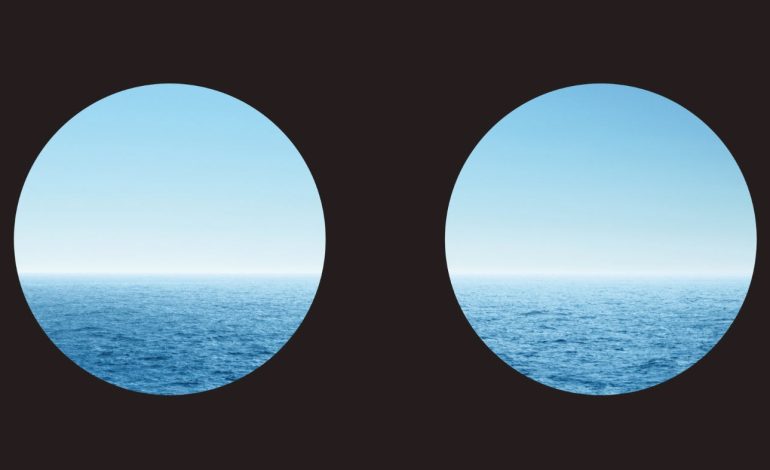
The Age of American Naval Dominance Is Over
By: Jerry Hendrix
13 March 2023
Very few Americans—or, for that matter, very few people on the planet—can remember a time when freedom of the seas was in question. But for most of human history, there was no such guarantee. Pirates, predatory states, and the fleets of great powers did as they pleased. The current reality, which dates only to the end of World War II, makes possible the commercial shipping that handles more than 80 percent of all global trade by volume—oil and natural gas, grain and raw ores, manufactured goods of every kind. Because freedom of the seas, in our lifetime, has seemed like a default condition, it is easy to think of it—if we think of it at all—as akin to Earth’s rotation or the force of gravity: as just the way things are, rather than as a man-made construct that needs to be maintained and enforced.
But what if the safe transit of ships could no longer be assumed? What if the oceans were no longer free?
Every now and again, Americans are suddenly reminded of how much they depend on the uninterrupted movement of ships around the world for their lifestyle, their livelihood, even their life. In 2021, the grounding of the container ship Ever Given blocked the Suez Canal, forcing vessels shuttling between Asia and Europe to divert around Africa, delaying their passage and driving up costs. A few months later, largely because of disruptions caused by the coronavirus pandemic, more than 100 container ships were stacked up outside the California Ports of Long Beach and Los Angeles, snarling supply chains throughout the country.
hese events were temporary, if expensive. Imagine, though, a more permanent breakdown. A humiliated Russia could declare a large portion of the Arctic Ocean to be its own territorial waters, twisting the United Nations Convention on the Law of the Sea to support its claim. Russia would then allow its allies access to this route while denying it to those who dared to oppose its wishes. Neither the U.S. Navy, which has not built an Arctic-rated surface warship since the 1950s, nor any other NATO nation is currently equipped to resist such a gambit.
Or maybe the first to move would be Xi Jinping, shoring up his domestic standing by attempting to seize Taiwan and using China’s anti-ship ballistic missiles and other weapons to keep Western navies at bay. An emboldened China might then seek to cement its claim over large portions of the East China Sea and the entirety of the South China Sea as territorial waters. It could impose large tariffs and transfer fees on the bulk carriers that transit the region. Local officials might demand bribes to speed their passage.
Once one nation decided to act in this manner, others would follow, claiming enlarged territorial waters of their own, and extracting what they could from the commerce that flows through them. The edges and interstices of this patchwork of competing claims would provide openings for piracy and lawlessness.
The great container ships and tankers of today would disappear, replaced by smaller, faster cargo vessels capable of moving rare and valuable goods past pirates and corrupt officials. The cruise-ship business, which drives many tourist economies, would falter in the face of potential hijackings. A single such incident might create a cascade of failure throughout the entire industry. Once-busy sea lanes would lose their traffic. For lack of activity and maintenance, passages such as the Panama and Suez Canals might silt up. Natural choke points such as the straits of Gibraltar, Hormuz, Malacca, and Sunda could return to their historic roles as havens for predators. The free seas that now surround us, as essential as the air we breathe, would be no more.
If oceanic trade declines, markets would turn inward, perhaps setting off a second Great Depression. Nations would be reduced to living off their own natural resources, or those they could buy—or take—from their immediate neighbors. The world’s oceans, for 70 years assumed to be a global commons, would become a no-man’s-land. This is the state of affairs that, without a moment’s thought, we have invited.
Everywhere I look, I observe sea power manifesting itself—unacknowledged—in American life. When I drive past a Walmart, a BJ’s Wholesale Club, a Lowe’s, or a Home Depot, in my mind I see the container ships moving products from where they can be produced at a low price in bulk form to markets where they can be sold at a higher price to consumers. Our economy and security rely on the sea—a fact so fundamental that it should be at the center of our approach to the world.
It is time for the United States to think and act, once again, like a seapower state. As the naval historian Andrew Lambert has explained, a seapower state understands that its wealth and its might principally derive from seaborne trade, and it uses instruments of sea power to promote and protect its interests. To the degree possible, a seapower state seeks to avoid direct participation in land wars, large or small. There have been only a few true seapower nations in history—notably Great Britain, the Dutch Republic, Venice, and Carthage.
I grew up on a dairy farm in Indiana and spent 26 years on active duty in the Navy, deploying in support of combat operations in the Middle East and Yugoslavia, both at sea and in the air. I did postgraduate work at several universities and served as a strategist and an adviser to senior officials in the Pentagon. Yet I have always remained, in terms of interests and outlook, a son of the Midwest. In my writings I have sought to underscore sea power’s importance and the reliance of our economy on the sea.
Despite my experience, I was never able to convince my mother. She spent the last years of her working life at the Walmart in my hometown, first at the checkout counter and then in accounting. My mother followed the news and was sharply curious about the world; we were close, and spoke often. She was glad that I was in the Navy, but not because she saw my work as essential to her own life. “If you like Walmart,” I often told her, “then you ought to love the U.S. Navy. It’s the Navy that makes Walmart possible.” But to her, as a mother, my naval service mostly meant that, unlike friends and cousins who deployed with the Army or Marine Corps to Iraq or Afghanistan, I probably wasn’t going to be shot at. Her perspective is consistent with a phenomenon that the strategist Seth Cropsey has called seablindness.
Today, it is difficult to appreciate the scale or speed of the transformation wrought after World War II. The war destroyed or left destitute all of the world powers opposed to the concept of a mare liberum—a “free sea”—first enunciated by the Dutch philosopher Hugo Grotius in 1609. The United States and Great Britain, the two traditional proponents of a free sea, had emerged not only triumphant but also in a position of overwhelming naval dominance. Their navies were together larger than all of the other navies of the world combined. A free sea was no longer an idea. It was now a reality.
In this secure environment, trade flourished. The globalizing economy, which allowed easier and cheaper access to food, energy, labor, and commodities of every kind, grew from nearly $8 trillion in 1940 to more than $100 trillion 75 years later, adjusted for inflation. With prosperity, other improvements followed. During roughly this same period, from the war to the present, the share of the world’s population in extreme poverty, getting by on less than $1.90 a day, dropped from more than 60 percent to about 10 percent. Global literacy doubled, to more than 85 percent. Global life expectancy in 1950 was 46 years. By 2019, it had risen to 73 years.
All of this has depended on freedom of the seas, which in turn has depended on sea power wielded by nations—led by the United States—that believe in such freedom.
But the very success of this project now threatens its future. Seablindness has become endemic.
The United States is no longer investing in the instruments of sea power as it once did. America’s commercial shipbuilding industry began losing its share of the global market in the 1960s to countries with lower labor costs, and to those that had rebuilt their industrial capacity after the war. The drop in American shipbuilding accelerated after President Ronald Reagan took office, in 1981. The administration, in a nod to free-market principles, began to shrink government subsidies that had supported the industry. That was a choice; it might have gone the other way. Aircraft manufacturers in the United States, citing national-security concerns, successfully lobbied for continued, and even increased, subsidies for their industry in the decades that followed—and got them.
It is never to a nation’s advantage to depend on others for crucial links in its supply chain. But that is where we are. In 1977, American shipbuilders produced more than 1 million gross tons of merchant ships. By 2005, that number had fallen to 300,000. Today, most commercial ships built in the United States are constructed for government customers such as the Maritime Administration or for private entities that are required to ship their goods between U.S. ports in U.S.-flagged vessels, under the provisions of the 1920 Jones Act.
The U.S. Navy, too, has been shrinking. After the Second World War, the Navy scrapped many of its ships and sent many more into a ready-reserve “mothball” fleet. For the next two decades, the active naval fleet hovered at about 1,000 ships. But beginning in 1969, the total began to fall. By 1971, the fleet had been reduced to 750 ships. Ten years later, it was down to 521. Reagan, who had campaigned in 1980 on a promise to rebuild the Navy to 600 ships, nearly did so under the able leadership of his secretary of the Navy, John Lehman. During Reagan’s eight years in office, the size of the Navy’s fleet climbed to just over 590 ships.
Then the Cold War ended. The administrations of Presidents George H. W. Bush and Bill Clinton slashed troops, ships, aircraft, and shore-based infrastructure. During the Obama administration, the Navy’s battle force bottomed out at 271 ships. Meanwhile, both China and Russia, in different ways, began to develop systems that would challenge the U.S.-led regime of global free trade on the high seas.


